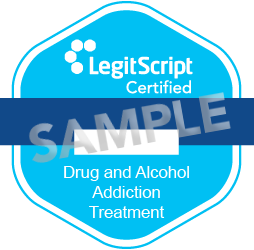Finding Balance: Dual Diagnosis Treatment for Anxiety Disorder and Substance Abuse
A Unique Treatment Approach for Anxiety Disorder and Substance Abuse
Anxiety disorders and substance use disorders are among the most common mental health conditions. Together, they can significantly impact an individual’s well-being and quality of life.
In fact, 17.7% of individuals with a current substance use disorder also meet the criteria for an anxiety disorder.1
This co-occurrence, known as dual diagnosis, presents unique challenges that require a comprehensive and integrated treatment approach.
Dual diagnosis in adults is estimated to make up 25.8% of those with any psychiatric disorder and 36.5% of those with any substance use disorder.2

Understanding the Complexity of Dual Diagnosis
Anxiety disorders are characterized by persistent and excessive worry or fear that can interfere with daily activities. When coupled with substance use disorder (SUD), individuals may use drugs or alcohol as a way to cope with their anxiety, leading to a cycle of dependence and worsening symptoms.
Conversely, substance use can trigger or exacerbate anxiety symptoms, creating a complex interplay between the two disorders. About 50% of individuals diagnosed with a severe mental disorder are also affected by substance abuse.3
Our Approach to Dual Diagnosis Treatment
At Mind Body Optimization (MBO), we recognize the complexity of dual diagnosis and offer a comprehensive approach to treatment. Our integrated approach combines evidence-based practices with integrative therapies to address recovery’s physical, emotional, and spiritual aspects.
We aim to help our clients achieve lasting recovery and emotional well-being by treating the whole person.
Here are some reasons to consider dual diagnosis treatment:
The Bidirectional Link
Common Patterns and Comorbidities
- Generalized anxiety disorder and alcohol use disorder
- Panic disorder and benzodiazepine use disorder
- Social anxiety disorder and alcohol or marijuana use disorder
- Post-traumatic stress disorder (PTSD) and opioid or sedative use disorder
- Obsessive-compulsive disorder (OCD) and stimulant use disorder
Assessment and Individualized Treatment Planning
Holistic Assessment
Individualized Treatment Planning
Integrated Approach
Comprehensive Evaluation of Co-Occurring Disorders and Underlying Risk Factors
Integrating Evidence-Based Practices for an Anxiety Disorder and Substance Abuse
Coordinating With Mental Health Professionals for Comprehensive Support
Evidence-Based Interventions for Dual Diagnosis Treatment
Cognitive-Behavioral Therapy (CBT) for an Anxiety Disorder and Substance Abuse
CBT is a widely used and effective treatment for an anxiety disorder and substance abuse. It also aids with many other mental health disorders.
It helps individuals identify and change negative thought patterns and behaviors that may be contributing to both an anxiety disorder and substance abuse.
In the context of dual diagnosis, CBT can help individuals develop coping strategies to manage anxiety without resorting to substance use.9
Dialectical Behavioral Therapy (DBT) for Dual Diagnosis Clients
DBT is another evidence-based therapy that has shown promise in treating dual diagnosis. It combines elements of CBT with mindfulness techniques to help individuals regulate their emotions and improve their interpersonal skills.
DBT can be particularly effective for individuals with dual diagnosis. It addresses both the emotional dysregulation associated with anxiety and the impulsive behaviors associated with substance use.10
Motivational Enhancement Therapy (MET) and Relaxation Techniques
MET is a client-centered therapy that aims to enhance motivation for change. It can be particularly useful for individuals with dual diagnosis who may be ambivalent about changing their substance use behaviors.
MET helps individuals explore their motivations for change and develop a plan to achieve their goals. This can help lead to long-term change and holistic wellness for many clients.11
Building Coping Skills In Dual Diagnosis Treatment
- Identifying triggers
- Developing coping strategies
- Building support networks
- Learning healthy habits
- Mindfulness and meditation
- Behavioral activation
Identifying Anxiety Disorder and Substance Abuse Risks
Developing Healthy Coping Mechanisms For Long-Term Health
Relapse Prevention Planning: Anticipating Challenges and Creating Supportive Systems
- Developing Self-Awareness: Individuals learn to recognize their thoughts, emotions, and behaviors, gaining insight into how these factors influence their mental health and substance use.
- Setting Realistic Goals: Setting achievable goals helps individuals stay motivated and focused on their recovery journey.
- Building a Support System: A supportive network of friends, family, peers, and treatment providers is essential in dual diagnosis treatment.
- Cultivating Healthy Coping Mechanisms: Engaging in healthy activities such as exercise, hobbies, and relaxation techniques can help individuals positively cope with stress and cravings.
- Practicing Mindfulness and Acceptance: Mindfulness practices can help individuals stay present and reduce feelings of anxiety or depression. Acceptance of difficult emotions can also help individuals navigate challenges more effectively.
Coping With Setbacks During Anxiety Disorder and Substance Abuse Treatment
Building Healthy Coping Mechanisms
Self-care is crucial for maintaining mental health and preventing relapse. Engaging in activities that promote relaxation and well-being can help individuals manage stress and anxiety.
Additionally, practicing good sleep hygiene, eating a balanced diet, and avoiding caffeine can support overall health and recovery.
Continued Support and Aftercare

Our Approach to Anxiety Disorder and Substance Abuse Treatment
Comprehensive Anxiety Disorder and Substance Abuse Treatment
If you or a loved one is struggling with an anxiety disorder and substance abuse, we encourage you to seek comprehensive care and support. Our team of experts is here to help you on your journey to recovery, providing compassionate care and innovative treatments that can make a difference.
Reach Out to Us Today
If you’re ready to take the first step toward recovery, we invite you to contact us today. Together, we can work towards a future of sustained healing and growth.
Resources
- https://www.ncbi.nlm.nih.gov/pmc/articles/PMC2921723/
- https://pubmed.ncbi.nlm.nih.gov/35834863/
- https://namimi.org/mental-illness/dual-diagnosis
- https://pubmed.ncbi.nlm.nih.gov/15540492/
- https://www.sciencedirect.com/science/article/abs/pii/S0376871620303343
- https://www.samhsa.gov/newsroom/press-announcements/20230920/new-data-recovery-from-substance-use-mental-health-problems-among-adults-in-united-states
- https://www.ncbi.nlm.nih.gov/books/NBK571451/
- https://www.samhsa.gov/co-occurring-disorders
- https://www.ncbi.nlm.nih.gov/pmc/articles/PMC5714654/
- https://www.ncbi.nlm.nih.gov/pmc/articles/PMC2797106/
- https://www.ncbi.nlm.nih.gov/pmc/articles/PMC5844161/





